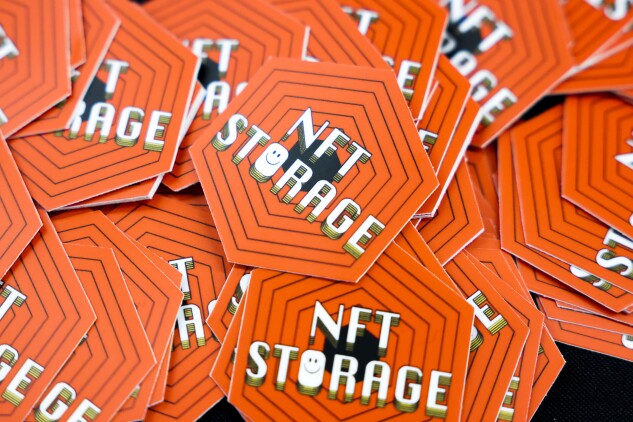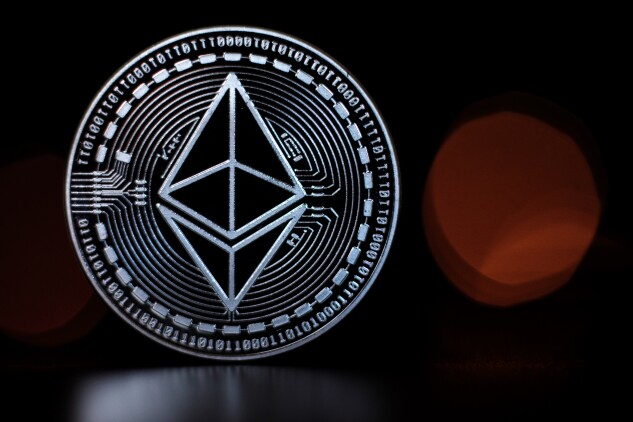21/10/2022 The Trials and Tribulations of NFT Valuation in the Marketplace

Digital tokens can represent any physical or digital entity in the ethereum blockchain, including virtual online game characters, fiat currency, or company assets, among others. One of the first token standards that allowed developers to build token applications was the Ethereum Request for Comments 20 (ERC-20). In November 2015, ERC-20 introduced a robust standard for fungible tokens, in which each token is the same as another token. The standard implements an application programming interface (API) for tokens within smart contracts and provides various functionalities, including transferring tokens between accounts and getting the total token supply in the network.
Ethereum Request for Comments 721 (ERC-721) was proposed in January 2018. It became the core standard for unique, non-fungible tokens, in which a token has a different value from another one due to age, rarity, or several visual properties (e.g., the color of an NFT that represents a virtual hat). The concept is contrary to fiat money, where one paper bill has the exact same value as any other paper bill. Non-fungible tokens fall under the ERC-721 standard.
Most unique values, such as rare game items, limited edition products, collections, and digital art, typically can be made into NFTs. By adding hash values, or numeric values of fixed length that uniquely identify data, to blockchain technology, it is possible to own and manage intangible assets in the digital domain that were not previously considered assets.
All aforementioned token standards were developed for the ethereumnotation blockchain, which still remains the most popular blockchain where NFTs are created and exchanged. Ethereum was chosen because the largest decentralized exchange, Uniswap, is built on the ethereum blockchain. Since its 2018 inception, it has been the primary engine for decentralized finance (DeFi) token trading. Unlike centralized exchanges such as Binance and Coinbase, trading on decentralized exchanges occurs entirely inside the chain. As a result, each transaction is settled on ethereum when a Uniswap trade is made.
Additionally, etherium can be wrapped and become a wrapped etherium, which represents a way to use it as an ERC-20 token. Because DeFi tokens are built on the ERC-20 standard, it is easy to exchange one token for another.
Overall, ethereum is a highly secure network and data architecture, where NFT projects run as ERC-721 coins and receive vast exposure to a large and growing market. NFTs are compatible with ethereum virtual machines, so ethereum wallets (such as Metamask and Ledger Nano) can support them.
NFTs hold intrinsic value due to their digital properties and traits. For example, the CryptoPunks collection from Larva Labs contains 10,000 randomly generated characters with visual properties such as hair style and eye color. NFT blockchain games, such as Etheria and CryptoKitties, were introduced as early as 2015, where NFTs are created. In blockchain-based games, users can produce elements of the game themselves within the decentralized ecosystem, and individually created elements are applied to NFTs, enabling transactions between users.
Ethereum, Flow, and Wax are the leading networks in the NFT market. All three platforms provide users with the ability to buy or sell NFTs. Some of these platforms also provide tools for users to issue NFTs and trade immediately. Meanwhile, Binance Smart Chain attracts attention as a mainnet—an independent blockchain running its own network with its own technology and protocol—to be used frequently in the NFT market. If the growth in deposit size of Binance Coin, which at one point was ranked fifth by market capitalization, is maintained, it may overtake ethereum in the NFT ecosystem based on its enormous user power.

NFT stickers sit at a booth at ETHDenver on Feb. 18, 2022 in Denver.
Photographer: Michael Ciaglo/Getty Images
Challenges in Valuing NFTs
One of the biggest challenges in valuing NFTs is to collect all relevant datasets that need to be analyzed to estimate the token values. Several marketplaces expose certain data fields in different ways via APIs, so there is no standardization of the data format of NFT properties and traits. Additionally, many NFT marketplaces don’t have a way to easily ingest NFT transactional data. They publish data on their websites, but the transactional data is not readily available.
Even when an API is available, it is not robust nor easy to use. In many cases, developers have to make an extra effort to ensure the data is consistent and complete. Enterprise support isn’t available, and there is no centralized authority in the NFT market that provides complete and accurate data—unlike in the traditional financial investment market, where companies such as Bloomberg, Intercontinental Exchange, CME Group, and S&P Global provide financial data.
The three main types of valuation methods are the income, market, and cost approaches. The market approach is the most appropriate for most NFTs because the financial metrics needed to capture the input data for the other two methods are missing. However, there are instances in which NFTs have the potential to provide income. For example, NFT owners can rent out NFTs to gamers, where the platform allows the NFT owner to set the lending rate and duration; receive royalty fees after the NFTs they created are sold; stake NFTs, where the NFT owner receives rewards for attaching the NFT to a platform or protocol; earn rewards for taking part in liquidity pool; and farm yields, where investors reinvest the earned rewards from one platform to another for extra returns.
In addition to valuing an NFT based on inherent digital properties it possesses and passive income it may generate, there are valuation considerations based on the broader marketability and recognition of a celebrity artist, which affect the value of their NFT over that of another unknown artist. These sources of influence on value may be highly speculative until the NFT is actually sold.
When implementing the market approach for NFTs, the value of a token is estimated based on comparable tokens by analyzing properties, traits, chain security, scarcity, release pace, and other factors. However, there are additional challenges for the market approach, including:
- Transactional data is not easy to extract from practically all NFT marketplaces.
- Several historical NFT transactions are outliers—that is, three standard deviations way from the average transaction.
- Celebrity-based influence on the NFT price is difficult to calculate.
- Many NFTs owned by investors are rare; there are very few minted, and their properties are not found in any other NFTs.
- Some NFT collections that have very low transactional volume, so there is limited historical sold price data.
- NFT marketplaces represent NFT data differently, so there is no data format standardization.
- Some NFT transactions are not shown in NFT marketplaces, and the corresponding blockchain has to be crawled to acquire that data.
- NFTs’ values are also influenced by which blockchain they live in.
- NFTs are used in games contain additional considerations that come into play when valuing them. In the Wolf game, for example, Wolf NFTs generate revenue from minting $WOOL coins.
What makes the valuation methods more volatile is that cryptocurrency is used to actively trade NFTs, so the value of the asset is determined by the value of the cryptocurrency at the time of the transaction.
There are different valuation considerations for the creator, purchasers, and owners of NFTs at the beginning of their existence and on an ongoing basis, as these assets are included on balance sheets and subject to financial statement audits. At the time of its creation, the value of an NFT may be dependent on the characteristics of its creator and of the NFT itself, among other things.

In this photo illustration of the ethereum cryptocurrency, altcoin sits arranged for a photograph on April 25, 2018, in London.
Photographer: Jack Taylor/Getty Images
Data and Methods Used to Value NFTs
There certainly are challenges in extracting NFT properties and past transactions. Some ways to extract the appropriate NFT data are to: develop software code that leverages existing APIs from NFT marketplaces and clean and transform the data; web scrape publicly available data because it can’t be analyzed in its current form; and build blockchain crawlers that ingest and analyze NFT transactional data.
After the data is collected, it is usually stored in a relational or non-relational database or a data lake depending on size and structure of the datasets. Depending on size and shape of data, different implementation methods that correspond to the market approach are used.
If the size of the data sets is sufficient, the data can be split into training, testing, and validation data sets through machine learning. The algorithm learns how different input fields affect the sold price and applies these learnings to the NFTs that need to be valued. Predictive accuracy is captured from the validation set, so the methods are benchmarked, and the data scientist chooses the most accurate method. Alternatively, sampling theory can be used, and a valuation price can be estimated with a certain confidence interval.
Times series methods must be combined with the statistical techniques because NFT value changes as a function of time. One of the most important calculations is determining the similarity matrix for the NFT to be valued to understand which other NFTs (within the same collection or others) resemble the token to be valued.
If the NFT has the potential to generate income (like in a game) in cryptocurrency, it has to be taken into account by projecting future incomes based on past behavior in the blockchain game.
If limited transactional data is available, the statistical methods used also can be adjusted, and use techniques that incorporate resampling, data augmentation, or transfer learning, among others. By using methods that perform well for small datasets, a data scientist can generate more accurate estimates and reduce the bias in the results.
Conclusions
NFTs have become popular in the last few years, and it is important to be able to value them as accurately as possible. There are unique challenges in valuing NFTs, but statistics and machine learning can help provide the appropriate solutions. Some of the main problems and the corresponding solutions are:
- Difficulty extracting data: Use custom software development and advanced data transformation methods.
- Absence of data standardization: Use data engineering methods that provide a uniform format after data is collected.
- Limited data for valuation purposes: Use appropriate statistical and machine learning methods that are appropriate for small data sets.
- Transactions take place in cryptocurrency: Base forecasts on the same cryptocurrency, and conversion to fiat currency is handled separately.
- NFT potential to generate income: Project future income based on past behavior.
- Factors unrelated to NFT properties such as celebrity artists, celebrity buyers, and the blockchain used can affect price: Quantify the effect of these factors to the NFT price based on past transactions.
 (0)
(0)
 (0)
(0)
